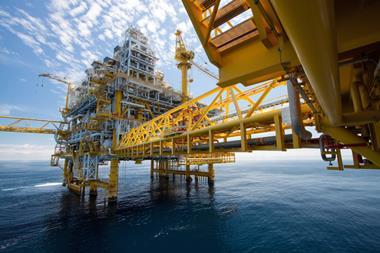Lack of action on climate change could see portfolios lose close to 50% of their value, according to research conducted by the University of Cambridge.
It warns that investors will be unable to hedge against certain climate risks but concedes that it is difficult for investors to distinguish between the types of risk they can counteract and those that can only be addressed by an overhaul of the economy.
The University of Cambridge Institute for Sustainability Leadership projects future global growth based around three scenarios: 1) a global agreement to limit temperature increases to 2° C; 2) the economy continues with the current level of mitigation; and 3) there are no further efforts to mitigate climate change.
It finds a notable impact in the short term when global-temperature increases are limited to 2° C and governments opt for no mitigation.
“The No Mitigation scenario,” the report says, “causes a global recession for the first three quarters of the analysis period, while the Two Degrees scenario does not cause a global recession but does cut economic growth in half when compared with baseline.”
It adds, however, that the No Mitigation scenario sees an indefinite continuation of loss of output, while limiting the global-temperature increases in line with the recommendations of the Intergovernmental Panel on Climate Change sees the economy underperform compared with current activity for up to 12 years but eventually grow “much faster” than the baseline scenario.
Transferring its calculations to four model portfolios – based around a high exposure to fixed income, a conservative portfolio, a balanced portfolio and an aggressive portfolio with high equity exposure – the Institute finds that the aggressive portfolio fared worst when No Mitigation took place, recording a loss of 45% and registering a “permanent loss, with returns not being restored to the baseline projection levels”.
The report argues that, unlike other claims, the modelling shows a demonstrable, immediate impact rather than a hypothetical future discount on current values.
It also finds that, while the largest loss for the aggressive portfolio – comprising 60% equities and 35% fixed income, largely mimicking the holdings of the Norwegian Government Pension Fund Global – was suffered in the 2° C scenario, this was down to the volatility suffered by equities, and the portfolio overall recovered relatively quickly.
Cautious investors, investing only 12% in equities and 84% in fixed income, were most shielded from the impact of climate change, the report adds.
“Regardless of the sentiment scenario studied, the high fixed income portfolio will be least at risk of any financial market disruption,” it says. “However, this portfolio also experiences low performance and small overall gains.”
Where no climate change mitigation occurs, the University’s report recommends a shift away from developed market real estate, while emerging market oil and gas could help cut the loss potential almost in half, by 47%.
It suggests capital should instead be deployed towards transport projects in developed markets and emerging market pharmaceuticals.
Jake Reynolds, director for sustainable economy at the Institute, argued that the calculations showed no investor was protected from the impact of climate change.
“However,” he said, “it is surprisingly difficult to distinguish between risks that can be addressed by an individual investor through smart hedging strategies and ones that are systemic and require much deeper transformations in the economy to deal with.”









